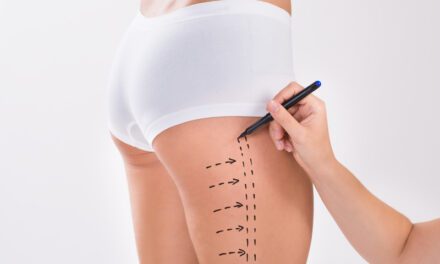By Babak Azizzadeh, MD, FACS
In the realm of aesthetic transformations, facelifts have long reigned supreme, enchanting beauty enthusiasts for years. Yet, in a fascinating twist, these captivating procedures have skyrocketed in popularity, leaving the world of beauty abuzz with anticipation.
So, what sparked this exhilarating surge? Most likely the advancements and the array of options that have come about in recent years. Furthermore, facelift techniques and outcomes have dramatically improved over the past few years, and people have developed “filler fatigue.” That said, let’s discuss some of the options available for your patients contemplating the procedure.
Traditional vs. Deep Plane Facelifts
When most people think of facelifts, they tend to think of the “old school” approaches, where the skin is stretched and pulled sideways to reduce the signs of aging. Today, people interested in a facelift look beyond the “windswept” look and instead desire a natural, youthful, well-rested appearance.
The Deep Plane facelift is currently the best facelift technique that addresses aging by repositioning the deeper tissues and muscles back to their youthful position, resulting in a more natural and authentic outcome. Although many surgeons perform facelifts, the deep plane facelift must be performed by an expert with a keen aesthetic eye and superb surgical skills with an intimate understanding of facial muscle and nerve anatomy beyond the basics taught in plastic surgical training.
To create beautiful neck aesthetics, deep neck contouring has also become an indispensable addition to the deep plane facelift. These techniques’ face and neck lift results have resulted in more authentic and attractive outcomes. Complementary surgical procedures. such as blepharoplasty, brow reshaping, fat grafting, lip lifts, buccal fat pad repositioning, and chin augmentation, need to be considered on a case-by-case basis to achieve harmony in the overall outcome.
As with any kind of surgery, there are risks with surgical and non-surgical options. However, the importance of selecting an expert surgeon cannot be overstated, as it significantly reduces most of these risks. As you interact with your patients, emphasizing the significance of choosing the right surgeon, engaging in thorough discussions about their health history and aesthetic goals, and providing comprehensive information about the risks and benefits of each procedure will empower them to make informed decisions that align with their individual needs.
Are Younger People Candidates for Facelifts?
Fillers, Botox, skincare, and energy-based devices—e.g., fractional lasers, Sylfirm, Morpheus, and microneedling—continue to be critical in the holistic approach to facial rejuvenation in younger patients; however, as we continue to understand the aging process, surgical procedures such as neck contouring and deep plane facelifts are no longer limited to men and women over 50. The facial anatomy and aging process can vary from patient to patient, and some individuals have genetic predispositions that require surgical intervention at an earlier age.
As surgeons, we regularly perform rhinoplasty for young adults with genetically bulbous tips or nose bridge bumps. Similarly, some individuals are born with small, recessed chins and heavy neck contours, necessitating surgical solutions like deep neck lifts and chin implants to enhance their appearance. For those experiencing a more rapid aging arc, early intervention with deep plane facelifts and blepharoplasty can effectively reverse the process. That’s why it’s critical to analyze each patient and create a personalized treatment plan with non-surgical and surgical procedures that will meet their needs and result in the best possible outcome.
Babak Azizzadeh, MD, FACS, is an internationally recognized expert in facial plastic surgery and chairman and director of the CENTER for Advanced Facial Plastic Surgery.




